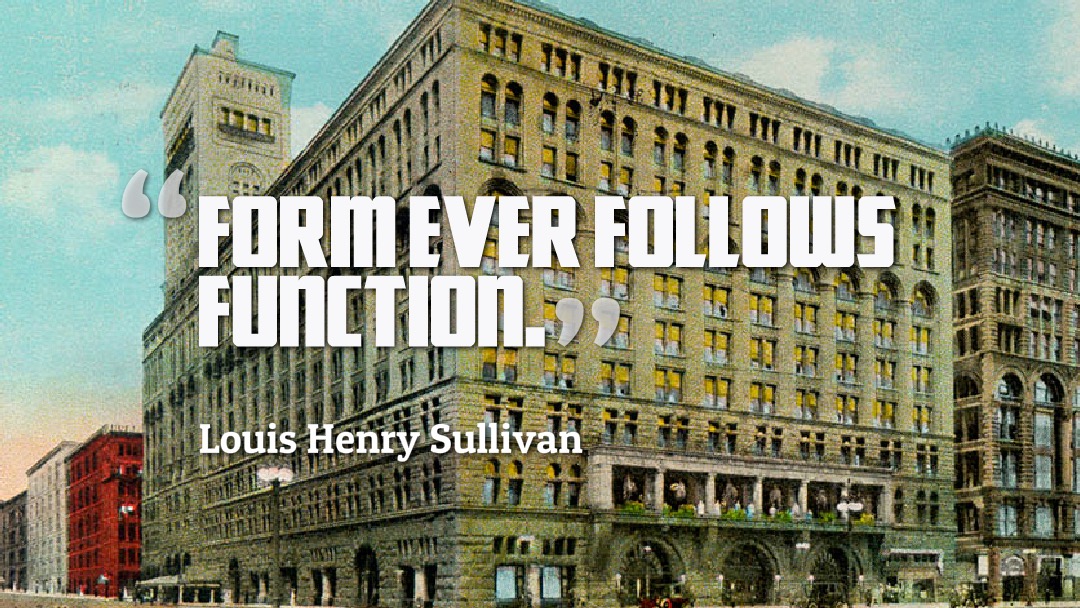Websites are often likened to field of architecture, whether in describing content organization (i.e. site architecture) or the act of “building a website” akin to that of a structure.
Two of America’s greatest architects opined on the concepts of form and functions. Louis Sullivan, the "father of skyscrapers," suggested “form ever follows function.” While Frank Lloyd Wright, "the greatest American architect of all time,” on the other hand responded with “Form follows function - that has been misunderstood. Form and function should be one, joined in a spiritual union.”
Inquire with either of these masters and they would undoubtedly say you need to understand the purpose, function, and intended audience before you can focus on appearance. So why is this not the norm in website design and development projects?

Stephen and I have been leading website development projects for close to twenty-five years between us. For the longest time, we trusted when a client brought us the plan for a project, they had spent extensive time analyzing data and formulating a plan.
Too often we met with prospects with a clear (or not so clear) vision of what they wanted their new website to look like, but couldn’t articulate its purpose, or even what organizational problems it was intended to solve.
It eventually dawned on us that many didn’t have a solid grasp of what they needed their website to do to support their organization’s mission and goals. Maybe they thought we would use our “magic server dust” to make their website successful? Is there a Photoshop filter for that?

Unfortunately, we often didn’t know enough to best recommend solutions, which lead us to asking increasingly more and more questions.
Through years of experience working with clients developing websites to overcome organizational obstacles we have refined a process for gathering critical information. By determining what the website needs to do, we can design a blueprint to build a website with measurable success.
We originally started with four basic questions:
- What are your organizational goals?
- What are the obstacles preventing you from achieving these goals?
- How can we apply to technology to overcome these obstacles?
- How will we measure success?
The idea was for our clients to provide us with the answers to the first two questions, and we would collaborate to answer the second two.
I’ll admit we aren’t a strategy agency, and are pleased to work with clients that either have organic strategy resources at their disposal, or contract with specialists. For others, we feel obliged to work with them to identify both the obstacles the website needs to overcome, as well as the metrics they will use to determine success.
For example, if a non-profit client needs to increase donations, and hopes to see an increase of 25% within six-months, we need to know this at the start of the project, so we can build the site around fulfilling this goal. It is unfair to us to come back six months after deploying the project asking why donations haven’t increased, if this was never shared with us.
We have recently refined our process with additional questions to help our clients answer the vital questions necessary for a successful project. Curious? We presented our new process before nearly one-hundred people in a packed room at at Drupal GovCon 2016 in Bethesda, MD yesterday. If you missed it, never fear. You can check out the slides below.
Is your website supporting efforts to overcome your organization’s obstacles? If not, please contact us and ask how we can apply our documented process to build a website that helps your organization rise to new heights.



Add new comment